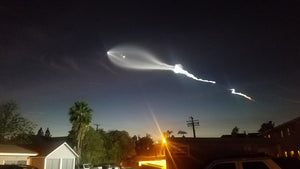March- Galaxy pairs, Binary stars, and the Beehive Cluster
M81 &M82
A highlight of the spring sky, this pair of galaxies can be seen in Ursa Major within the same low-powered field of view.
M81 (Bode's Galaxy) is one of the brightest galaxies in our night sky. Its enormous size and well-defined spiral arms make it visible through almost any telescope. However, a telescope with an aperture of 8″ or more will give the best detail under dark skies.
M82 (The Cigar Galaxy) is five times more luminous than our Milky Way and is also the nearest known outburst galaxy. We recommend using a wide-field telescope to capture both objects together.
M44- Beehive Cluster
Messier 44, aka the Beehive Cluster is a large open star cluster located in the constellation Cancer. The Beehive Cluster contains about 1,000 stars, mostly young with an approximate age of 600 million years. The bright, massive stars are mostly concentrated in the central region and the fainter, less massive members are found in the cluster’s halo. It can be seen with the naked eye under dark skies but may be best observed through binoculars, rather than a telescope. Low power binoculars will show an elongated diamond shape with a close double on the northern tip. While more powerful binoculars will nicely enhance the cluster, with a multitude of stars becoming visible across about half the field of view.
Gamma Leonis- Algieba
Algieba is a magnificent binary system with orange-red and yellow components visible through a modest telescope under good atmospheric conditions. Gamma Leonis is the 3rd brightest star in the constellation Leo.







